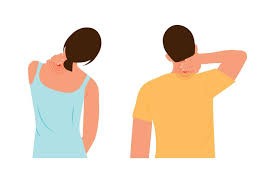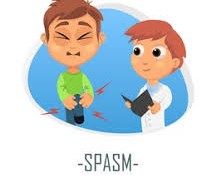Understanding and Managing Muscle Spasms


What Are Muscle Spasms?
Have you ever felt your muscle suddenly tighten without warning, making it hard or painful to move? That is what we call a muscle spasm. A muscle spasm is when one or more muscles contract on their own. This can happen for a short moment or sometimes last longer, causing discomfort.
- They may occur during rest or activity
- They are often described as sudden, sharp, or cramping pains
- Commonly seen in the legs, back, or neck
- May be mild and harmless or linked to underlying conditions
Muscle spasms are the body’s reaction when muscles become overworked, tired, or irritated. Sometimes they are temporary, but other times they may point to a deeper problem. They are not always dangerous, but knowing why they happen helps to deal with them better.
Why Do Muscle Spasms Happen?
Muscle spasms happen for many reasons. Most are related to how we use our muscles or the overall condition of the body.
- Dehydration from not drinking enough fluids
- Lack of important minerals like potassium, calcium, or magnesium
- Too much exercise or physical strain
- Sitting or standing in the same position for a long time
- Stress and tension affecting muscle balance
Each of these triggers can make the muscles react suddenly. That is why prevention is often about lifestyle choices, such as hydration, rest, and balanced nutrition.
Understanding the main cause helps to reduce how often spasms occur.
Signs and Symptoms of Muscle Spasms
When muscle spasms appear, they usually give clear signals that something is wrong.
- Sudden tightening of a muscle
- Sharp pain or cramping sensation
- A hard lump felt under the skin where the muscle contracts
- Temporary difficulty moving the affected area
- In some cases, twitching movements
These symptoms can last from seconds to several minutes. Although they often pass on their own, recurring spasms may need medical advice to rule out hidden conditions. Noticing these signs early helps in managing the pain and preventing future episodes.
Who Is Most at Risk?
Not everyone has the same chance of experiencing muscle spasms. Some people are more likely than others.
- Athletes and people who exercise intensely
- Older adults with weaker muscle tone
- People who do not stay hydrated
- Individuals with poor circulation or nerve issues
- Workers who stay in the same position for long hours
These groups often face repeated episodes because their bodies are either under stress or lack enough recovery time.
Identifying these risk groups helps in planning preventive steps that keep muscles healthier.
Everyday Ways to Prevent Muscle Spasms
Simple changes in daily habits can make a big difference in lowering the risk of muscle spasms.
- Drink enough water throughout the day
- Eat foods rich in potassium, calcium, and magnesium
- Warm up before exercise and cool down after
- Stretch muscles gently, especially before bed
- Take breaks when sitting or standing for long hours
Prevention is always easier than treatment. With a balanced lifestyle, many spasms can be avoided completely. Small daily steps can keep muscles more relaxed and less prone to sudden contractions.
Natural Relief Options
When muscle spasms occur, there are several natural ways to ease the pain and help the muscle recover.
- Gently stretch the affected muscle
- Massage the tight area to improve circulation
- Apply heat for relaxation or cold for pain relief
- Rest and avoid overusing the muscle until it feels better
- Practice relaxation techniques like breathing exercises to reduce stress
These methods are easy to apply at home and often bring fast relief. Natural relief methods work best for mild spasms and support recovery after sudden muscle tightening.
When to Consider Medication Support Like Baclof
Sometimes lifestyle changes and natural relief are not enough, especially when muscle spasms become severe or frequent. In these cases, medication such as Baclof (Baclofen) may be considered as a treatment option.
- Helps reduce muscle stiffness and frequent spasms
- Often suggested when other methods do not provide enough relief
- Works by calming the signals in the nerves that cause tight muscles
- Usually recommended under a doctor’s supervision
This medication is generally reserved for people whose daily life is strongly affected by muscle spasms. Using such treatment can improve mobility and reduce pain linked to chronic spasms.
Baclof as Part of a Broader Treatment Plan
Baclof (Baclofen) is not a stand-alone answer but part of a wider care plan. Doctors may suggest it along with physical therapy, gentle exercise, and healthy lifestyle choices.
- Encourages better movement and comfort in daily life
- Supports long-term management of frequent muscle spasms
- Reduces the impact of pain and stiffness on normal activities
- Helps patients regain confidence in moving freely
The goal is always to improve quality of life, reduce pain, and help people remain active.
Medication like Baclof, when used correctly, can make a strong difference for those living with recurring muscle spasms.
Final Thoughts
Muscle spasms are sudden, often painful contractions that can affect anyone. While they are commonly caused by dehydration, overuse, or lack of minerals, they may also result from underlying conditions. Preventive steps like hydration, proper nutrition, stretching, and rest are key to reducing their frequency. For those with recurring or severe spasms, medical guidance is essential. Treatments such as Baclof (Baclofen) can be part of a complete care plan, improving comfort and mobility. The best approach combines healthy lifestyle habits, natural relief, and professional treatment when needed.
Drug Description Sources: U.S. National Library of Medicine, Drugs.com, WebMD, Mayo Clinic, RxList
Reviewed and Referenced By:
- Dr. Alan Carter, PharmD
Clinical pharmacist specializing in chronic pain management and antiepileptic drugs. Frequently cited on Drugs.com for reviewing therapeutic guidance on Pregabalin’s pharmacokinetics, dosage, and safety profile.
- Dr. Emily Johnson, MD
Pediatric specialist with focus on infectious diseases and childhood conditions. Regular contributor to WebMD articles on ear infections and antibiotic treatments.
- Dr. Michael Rivera, PharmD
Expert in antibiotic therapy and drug safety, often referenced on RxList for professional reviews of drug interactions and treatment options.
- Dr. Sarah Thompson, MD
Internal medicine physician with expertise in evidence-based clinical guidelines, regularly contributing to publications and peer-reviewed material featured in the U.S. National Library of Medicine.
- Dr. James Miller, MD
Neurologist specializing in movement disorders and rehabilitation medicine. Frequently cited by Mayo Clinic for his work on managing muscle-related conditions and treatment approaches for spasticity.
Article Post: Editorial Team of RXShop.md
(Updated at Aug 27 / 2025)

